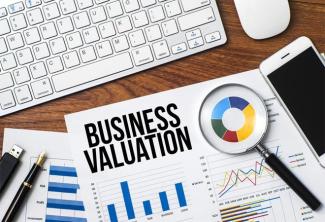
Valuing A Business
The Importance Of Valuing And Re-valuing Your Business and some tips on how to do it.
Being a business owner and entrepreneur requires knowing the intricacies of how your company works. But, have you asked yourself what your company is worth? If you are a founder of a fast-growing company that has raised venture capital, then you know how fast the value of your company can change.
If you are the owner of a closely held business, maybe handed down from generation to generation, it will be harder to know what your business is worth. Either way, if you don’t know the value of your business it may create problems if you eventually sell or transfer your business. More so if the sale or transfer is swift.
Why Value My Business?
Not surprisingly, value holds different meanings to different people, depending on the circumstances. For example, value has a different meaning when we buy an asset versus when we sell an asset. It’s human nature to assign a higher value to what belongs to us as assets than when we purchase the same asset. Research shows that people tend to assign more value to something earned rather than to something gained. As a result, we are more likely to assign less value to a million dollars won in Vegas or the lottery, than the same amount of money in our IRA after a lifetime of savings and sacrifices.
The sale of your company may be many years into the future, however, understanding what your company is worth today can have multiple pay-offs such as:
- Securing additional financing to further scale and expand your company.
- Valuation serves as an important management tool that can give you insights on how to reposition your business to enhance its marketability.
- Puts you in the driver’s seat when negotiating the sale of the business in order to get the best price possible.
- Empowers you to build your financial plan, modeling how the value and potential sale of your business will directly affect your financial situation.
Determining The Value Of My Business?
Having determined the importance of valuing your business, I have broken down the three approaches most often used to calculate a business valuation.
The Cost Approach (Asset-based)
The cost approach or the asset-based approach is a balance sheet-focused approach with the value estimated by combining the replacement cost of each of the individual assets that comprise the business. Simply put, if you had to purchase all the same assets you own today and taking into consideration these assets are not new, how much would you have to pay for them? Practically speaking, we start by looking at the market for new assets as it’s likely to be more liquid and provide better information. Once we have the cost of the new assets, we discount that cost for age and usefulness. We are then able to subtract the physical depreciation, the functional usefulness, and finally the economic usefulness.
Although the cost approach works quite well when trying to value a single piece of equipment, it becomes quite cumbersome when the list of assets includes all the assets of a business. Another drawback of this method is that intangible assets such as brands, customer relationships, trade secrets patents, etc. are difficult to identify and value, and therefore, are at risk of being excluded from the total calculation.
The Earning Value Approach
The earning value approach is based on the idea that a business’s true value lies in its ability to produce wealth in the future. The most common earning value approach is Capitalizing Past Earnings. By using this approach, the value is determined by using an expected level of cash flow for the company using a company's record of past earnings. The earnings are normalized for unusual revenue or expenses, and the expected normalized cash flow is multiplied by a capitalization factor. The capitalization factor reflects what rate of return a reasonable purchaser would expect on the investment, as well as a measure of the risk that the expected earnings will not be achieved.
Another method of the earning value approach is the discounted future earnings. Instead of an average of past earnings, an average of the trend of predicted future earnings is used and divided by the capitalization factor.
It is important to bear in mind that any valuation of a service-oriented sole proprietorship needs to involve an estimate of the percentage of business that might be lost under a change of ownership. In many cases, this can be alleviated. An example would be when a trusted family member, who may already be familiar with the client list, takes over the business.
The Market Approach
The market approach assumes the relative value of any asset can be estimated by looking at how the market values similar or comparable assets. This approach utilizes impartial data on market values, either from trades or controlled transactions for assets similar to the subject assets. Examples would include multiples of earnings. This is earnings before interest, taxes and amortization expenses, cash flow, revenue, square feet, etc. The economic underpinning of this method is the so-called “Law of One Price,” which simply states that in properly functioning markets, similar assets should have similar values.
One of the main challenges in the market approach is that selecting comparable companies requires skill and is often very subjective. To find the relative value, it is necessary to have the following information:
- An identical asset, or a group of comparable or similar assets;
- A standardized measure of value (in equity, this is obtained by dividing the price by a common variable, such as earnings or book value);
- And if the assets are not perfectly comparable, variables control for the differences.
- In the market approach, it is very important to match value with the right income stream.
Business valuation does not provide irrefutable results as it combines several factors. To obtain fair market value, this approach is useful in establishing a base, and under these conditions, the valuation will show what the value of the business is if purchased by an average buyer. In other words, this is the price the current owner should be willing to pay if they do not own the company already.
The shortcomings of a business valuation are that it does not assist the seller in identifying the highest possible investment value in the marketplace. This is because it is just about impossible to know all the expectations and motivations of each potential buyer.
Nevertheless, before deciding what to pay for a company, a buyer will typically undertake a comprehensive valuation exercise to reflect their view of the transaction. Buyers, to their advantage, need only be concerned about their expectations.
If the buyer does use the methodologies illustrated above, it would be a good idea to follow the same protocol for the seller. This is simply to challenge the assumptions or price ranges proposed by the buyer and acts as a sort of safety guard. The exact price of a company is not determined; however, we can obtain quite a good idea of what a company is certainly not worth.
As mentioned above the valuing of your business is important not only for the business but for the founders, on a personal level, so they can do their own personal planning.
- If the business is still scaling and having exponential growth, how does that affect the lives of the founders?
- If the business is about to be sold, how does that transaction affect the lives of the founders?
- And, although not ideal, what happens if the business goes bankrupt, how does that affect the lives of the owners?
These are important considerations that should be assessed sooner than later. As with anything, educate yourself so you can make solid, informed decisions that you can feel good about.
Thank you for reading!
Cheers,

